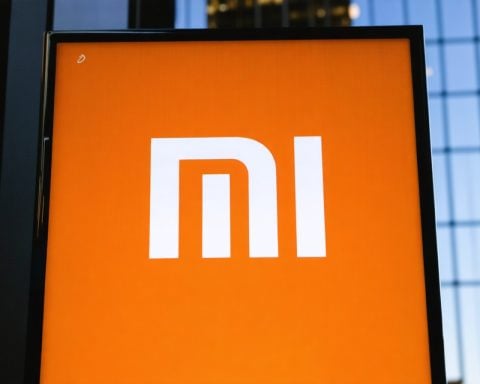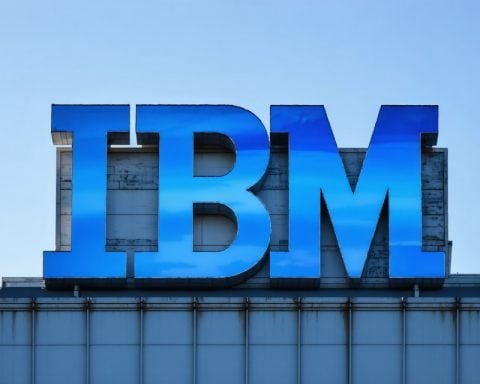- Nokia collaborates with NTT and Anritsu to pioneer “Elastic Networking,” optimizing 5G infrastructure energy efficiency through AI.
- “Elastic Networking” enhances resource allocation, dynamically managing network demand to reduce energy usage without sacrificing performance.
- SandboxAQ partners with Saudi Aramco to revolutionize petrochemicals by transforming carbon emissions into valuable automotive composites.
- The vision extends to the production of new pharmaceuticals from rich genomic data in Gulf nations, fostering healthcare innovation.
- The AI-driven transformation promises to blend sustainability with technological progress, ushering in a cost-efficient, eco-friendly future.
Picture this: a new era where artificial intelligence not only powers our devices but also transforms industries, driving sustainability and innovation. Nokia, a long-time leader in networking solutions, stands at the forefront of this revolution. In a significant collaboration with NTT and Anritsu Corporation, Nokia is pushing the boundaries by implementing “Elastic Networking,” a paradigm shift that reduces energy consumption in 5G infrastructures without sacrificing performance.
Envision server rooms bathed in cool, efficient light as underused network resources seamlessly flow from one node to another, propelling the digital traffic of our connected lives. Elastic networking leverages AI to optimize resource allocation, selectively putting equipment to sleep when demand is low. This could usher in a new era of energy-efficient telecommunications, preparing companies like NTT for the AI-driven data demands of tomorrow.
Meanwhile, SandboxAQ is busy decoding the building blocks of sustainability. By partnering with giants like Saudi Aramco, SandboxAQ aims to revolutionize the petrochemical industry. Imagine a world where carbon emissions morph into high-value composites for the automotive industry, making vehicles lighter and more eco-friendly. The era of simply storing emissions is dwindling, giving rise to innovative “carbon up-valuing,” where waste becomes wealth.
This bold venture extends into healthcare. Imagine the Gulf nations, rich in genomic and medical data, transforming AI insights into groundbreaking pharmaceuticals, no longer dependent on external biotech solutions.
As AI blurs the lines between science fiction and reality, the promise of a greener, cost-efficient future is not far off. Whether it’s Nokia’s strides in telecommunications or SandboxAQ’s audacious petrochemical transformations, the AI renaissance is reshaping our world, one innovation at a time.
Revolutionary AI Trends: From Elastic Networking to Carbon Up-Valuing
How-To Steps & Life Hacks: Implementing AI for Sustainability
1. Identify Areas with High Resource Consumption: Start by auditing energy usage in your infrastructure to pinpoint inefficiencies. AI algorithms can help by providing detailed analytics.
2. Opt for Elastic Networking Solutions: Adopt AI-driven networking equipment, such as those developed by Nokia, which can dynamically allocate resources. This technology optimizes network nodes and reduces energy waste by putting idle systems to sleep during low usage.
3. Transform Emissions into Assets: Use AI to understand and develop processes for “carbon up-valuing.” Technologies deploying machine learning can aid in converting carbon emissions into valuable materials, applicable in industries like automotive manufacturing.
4. Leverage Genomic Data for AI-Driven Pharmaceuticals: Utilize vast datasets to fuel AI models that innovate drug development. This can be transformational for regions rich in healthcare data, providing tailored solutions more efficiently than traditional methods.
Real-World Use Cases
– Telecommunications: Nokia’s collaboration with NTT and Anritsu demonstrates practical applications of AI to optimize 5G infrastructure, significantly reducing energy usage without a drop in performance.
– Petrochemicals: SandboxAQ partnering with Saudi Aramco showcases AI’s potential in transforming carbon emissions into composite materials, paving the way for sustainable manufacturing.
Market Forecasts & Industry Trends
The AI-driven sustainability market is expected to grow significantly over the next decade. According to a report by MarketsandMarkets, the AI market size in the energy sector is projected to reach $12 billion by 2025. Companies investing in AI and sustainable technologies like Nokia and SandboxAQ are well-positioned to lead this shift.
Reviews & Comparisons
– Nokia vs. Traditional Networking: While traditional networks operate at full capacity, Nokia’s elastic networking dynamically adjusts energy use, offering up to 30% energy savings according to company estimates.
– SandboxAQ in Petrochemicals: Competing carbon capture companies primarily focus on storage, whereas SandboxAQ goes a step further by converting emissions into high-value products, providing added economic incentives.
Controversies & Limitations
AI implementations can face challenges such as data privacy concerns, the ethical use of AI, and the need for large volumes of data to be effective. Moreover, transitioning to AI-driven systems can involve high initial costs and require significant changes in existing infrastructure.
Features, Specs & Pricing
– Nokia’s Elastic Network: Key features include dynamic power scaling, AI-driven load balancing, and integration capabilities with existing infrastructure. Pricing varies based on deployment scale and specific customizations required.
– AI Solutions by SandboxAQ: Proprietary algorithms for carbon up-valuing and material creation are tailored to the client’s requirements, offering flexible pricing models based on usage.
Security & Sustainability
By optimizing resource usage, AI can significantly lower carbon footprints, contributing to global sustainability goals. However, ensuring data security in AI applications is paramount, requiring robust encryption and governance protocols.
Insights & Predictions
AI is set to revolutionize traditional industries by not just improving efficiency but also opening avenues for entirely new product possibilities and economic models. Companies adopting AI solutions for sustainability can expect to not only improve their ecological impact but also gain competitive advantages.
Tutorials & Compatibility
– Implementing AI Solutions: Organizations can integrate AI by partnering with tech firms specializing in AI deployments. Tailored workshops and tutorials can train employees on AI management and application.
– Genomic Data Utilization: Compatibility with existing data management systems and collaboration with AI providers will accelerate pharmaceutical development efforts.
Pros & Cons Overview
Pros:
– Significant energy savings and cost reduction.
– Enhanced product and service innovation.
– Potential for new revenue streams through sustainability projects.
Cons:
– High upfront investment and change management costs.
– Possible ethical and data privacy issues with AI usage.
– Dependence on high-quality and voluminous data sets for AI efficacy.
Actionable Recommendations
– Start small by piloting AI solutions in select areas to evaluate effectiveness before full-scale deployment.
– Invest in employee training on AI technologies to ensure smooth integration and operation.
– Collaborate with AI technology providers to tailor solutions that meet specific industry needs.
For more insights on cutting-edge AI developments, visit Nokia and SandboxAQ.






















